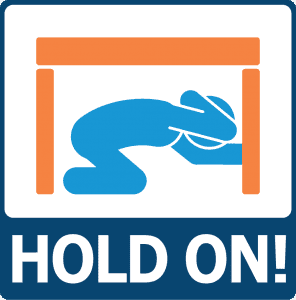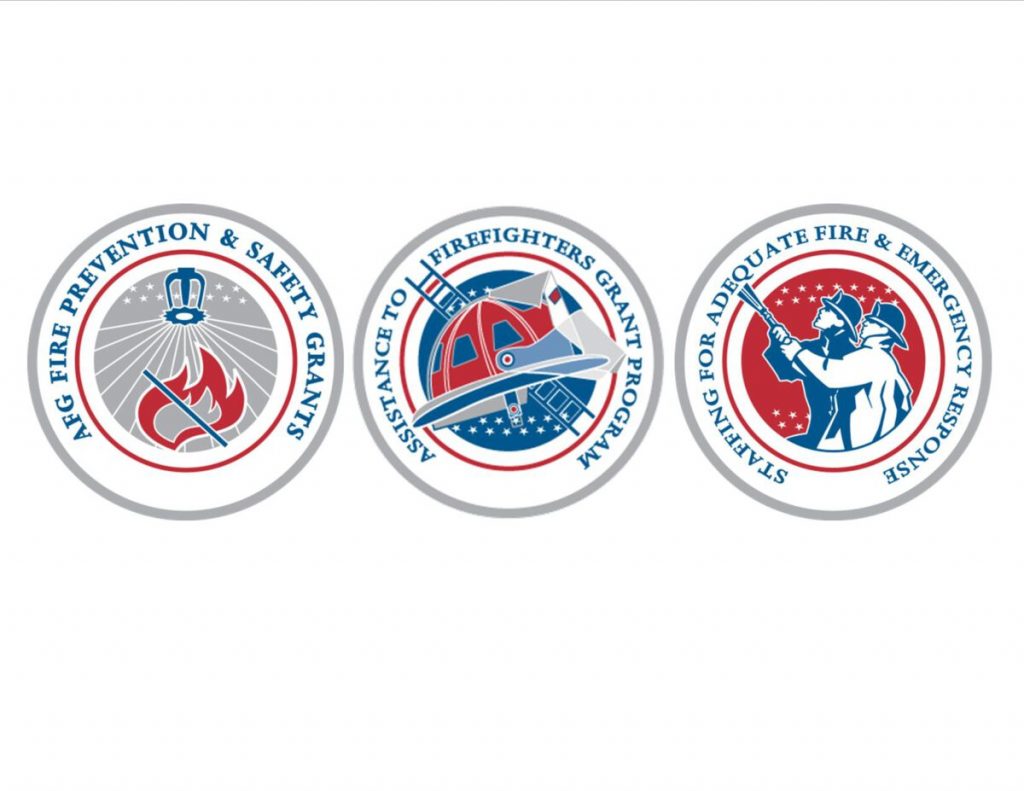7 Steps to Earthquake Survival
Earthquakes Are a Part of California Life
Being injured or worse is not part of the equation
The Seven Steps to Earthquake Survival
Preparing for the next destructive earthquake can help you and your family to better survive and recover. By following the seven (7) steps listed on this page, you can make a difference in your family’s resilience and reduce the chances of being injured during a significant earthquake.
These seven steps apply to not only your home, but your school or workplace as well.
- Step 1
- Step 2
- Step 3
- Step 4
- Step 5
- Step 6
- Step 7
Secure your space
- Hang plants in lightweight pots with closed hooks, well secured to a joist or stud and far away from windows
- Install strong latches on kitchen cabinets.
- Use flexible connections where gas lines meet appliances.
- Remove or lock refrigerator wheels, secure to studs.
- Secure valuable electronics items such as computers and televisions.
- Keep breakables in low or secure cabinets with latches.
- Move heavy plants and other large items to floor or low shelves.
- Hang mirrors and pictures on closed hooks, and secure them to walls with velcro.
- Secure free-standing wood stoves or fireplace inserts.
- Keep heavy unstable objects away from doors and exit routes.
- Place bed away from windows or items that may fall and place only light weight/soft items over bed.
- Secure knick knacks and other small valuables with museum putty.
- Brace overhead light fixtures.
- Secure top-heavy furniture to studs.
- Secure water heater with metal straps attached to studs.
- Trim hazardous tree limbs.
Make a plan
Making a plan is not just an escape route on a piece of paper. It’s an ACTION PLAN that you and your family (or co-workers) will automatically begin to follow (because you practice it!) when the next destructive earthquake occurs.
The plan should include:
Being Safe During an Earthquake:
- Practice “drop, cover, and hold on.”
- Identify safe locations in every room, such as under a desk or a table.
- Learn to protect yourself no matter where you are when an earthquake occurs.
- The U.S. Geological Survey is working with west coast states to implement the ShakeAlert Earthquake Early Warning System to deliver alerts when shaking is on the way.
- Visit earthquake.ca.gov to learn about California’s Earthquake Early Warning System and how to download the MyShake app.
- Keep shoes and a flashlight in a closed “under-bed bag” tied to each bed.
- Having a properly charged fire extinguisher in your home. Learn to use it (CalFire Prevention teaches this).
- Teach everyone in your household to use emergency whistles and/or to knock three times repeatedly if trapped. Rescuers searching collapsed buildings will be listening for sounds.
- Know the location of utility shutoffs and keep needed tools nearby. Make sure you know how to turn off the gas, water, and electricity to your home. Only turn off the gas if you smell or hear leaking gas.
- Make certain you have working smoke alarms and CO detectors in your home. Today, battery operated alarms last for up to 10 years, so there’s no need to change batteries, and no excuse not to have them in appropriate locations.
- Take a first aid and cardiopulmonary resuscitation (CPR) training course. California Fire Prevention safety officers teach both hands-only and Red Cross certified CPR.
- Check with your city or county to see if there is a Community Emergency Response Team (CERT) in your area. Consider taking the 18 hour course and becoming a member.
- Work with your neighbors to identify who has skills and resources that will be useful in an emergency, and who may need special attention (children, seniors, mobility challenged, etc).
- Identify the needs of household members and neighbors with special requirements or situations, such as use of a wheelchair, walking aids, special diets, or medication.
Understanding Proper Communications Can Save a Life!
- Provide all family members with a list of important contact phone numbers.
- Chose a safe place outside of your home to meet your family or housemates after the shaking stops.
- Sign up for city, county, and/or state emergency alert systems to receive information via text, or download apps that provide similar information. (In California: CalAlerts.org.)
- Designate an out-of-area contact person who can be called by everyone in the household to relay information.
- Learn about the earthquake plan developed by your children’s school or day care. Keep your children’s school emergency release card current.
- Consider where you might live if your home cannot be occupied after an earthquake or other disaster.
- Keep copies of essential documents, such as identification, insurance policies, and financial records, in a secure, waterproof container, and keep with your emergency supplies kits. Include a household inventory (a list and photos or video of your belongings).
Disaster GO Kits
Other items to have on hand in an emergency like an earthquake include:
- Store fire extinguisher (type ABC is most universal) in easily accessible location.
- Keep several flashlights in easily accessible places around the house and don’t forget to store extra batteries with them.
- Keep wrench or turn-off tool in water proof wrap near gas meter.
- Know the location of your main electrical switch (fuse box or circuit breaker).
- Have your emergency plan accessible and discuss with all family members.
- Know whether you live, work, or play in a tsunami hazard zone.
- Obtain a NOAA Weather Radio with the Public Alert feature to notify you of tsunamis and other hazards.
- Keep gas tank at least half full.
Minimize Financial Hardships
Manage all important documents for security (keep copies in the cloud for example), and keep these key factors in mind:
- Maintain digital copies of identification.
- Maintain digital copies of insurance cards.
- Keep a list of emergency contact numbers.
- Take photos of belongings in your home. (This will help you file an insurance claim)
- Keep a credit card specifically for disasters – don’t use it for any other reason.
Drop, Cover, and Hold On!
This is the best method of protecting yourself:
DROP where you are, onto your hands and knees. This position protects you from being knocked down and reduces your chances of being hit by falling or flying objects.

COVER your head and neck with one arm and hand.
- If a sturdy table or desk is nearby, crawl underneath for shelter.
- If no shelter is nearby, crawl next to an interior wall.
- Stay on your knees; bend over to protect vital organs.

- Under shelter: hold on to it with one hand; be ready to move with your shelter if it shifts
- No shelter: hold on to your head and neck with both arms and hands.
After the shaking has stopped…
Step One: How are you doing?
- Make certain you’re not injured. If you are, try to determine the extent of your injuries.
- If you’re injured, determine how to let someone know – and to get help.
- If you’re not injured, let people know you’re okay. Try your phone, but it may not work. If not, try using texting functions, or even post that you’re okay on Facebook, if you have access to the Internet. Talk to your neighbors. Follow your communications plan.
- Check your first aid kit for detailed instructions on first aid measures.
- If a person is bleeding, put direct pressure on the wound. Use clean gauze or cloth, if available.
- If a person has no pulse, begin CPR (cardiopulmonary resuscitation). Initiate the 911 system.
- Treat anyone injured or traumatized for shock by keeping them warm with a blanket. Elevate their feet over their heart, as long as this does not interfere with their injuries.
- Do not move seriously injured persons unless they are in immediate danger of further injury.
- Cover injured persons with blankets or additional clothing to keep them warm.
- Get medical help for serious injuries. Initiate the 911 system.
- Carefully check children or others needing special assistance.
- Fire. If you are trained and have a fire extinguisher handy, put out small fires in your home or neighborhood immediately. Call for help, but don’t wait for the fire department. Large fires are a sign to evacuate.
- Gas Leaks. Shut off the main gas valve only if you suspect a leak because of broken pipes, the odor or sound of leaking natural gas, or you see the meter spinning quickly. Only the gas company can turn the gas back on after they check for leaks, so shut it off only if necessary. The phone book has detailed information on this topic. Do not use candles or matches. You could start a fire and there may also be gas leaks. Use your flashlights, battery powered lights, and light sticks.
- Damaged Electrical Wiring. Shut off power at the main breaker switch if there is any damage to your house wiring. Leave the power off until the damage is repaired.
- Broken Lights and Appliances. Unplug these as they could start fires when electricity is restored.
- Downed Power Lines. If you see downed power lines, consider them energized and stay well away from them. Keep others away from them also. Never touch downed power lines or any objects in contact with them.
- Fallen Items. Beware of items tumbling off shelves when you open the doors of closets and cupboards.
- Spills. Use extreme caution. Clean up any spilled medicines, drugs, or other non-toxic substances. Potentially harmful materials such as bleach, lye, garden chemicals, and gasoline or other petroleum products should be isolated or covered with an absorbent such as dirt or cat litter. When in doubt, leave your home.
- Damaged Masonry. Stay away from chimneys and walls made of brick or block. They may be weakened and could topple during aftershocks. Don’t use a fireplace with a damaged chimney. It could start a fire or let poisonous gases into your home.
Start the Road to Recovery
This is where the seven steps come together. Use your emergency plan. Utilize your Disaster GO kit. Use the communications plan. Check for damage, gas leaks, fires, and so on. Take a fire extinguisher with you, if you have one. Although mobile service may be out, keep your phone with you, and don’t use it unless essential (don’t let the battery drain).
There will be aftershocks – and if you experience them, revisit the above – and then, follow these steps:
- Take pictures of any damage to your property and home.
- Contact your insurance agent or company right away to begin your claims process. Keep records of any repair or cleaning costs.
- Check on the condition of your neighbors, especially those who are seniors or disabled.
- Monitor local radio or television reports about where to get emergency housing, food, first aid, clothing and financial assistance.
- Place all phones back on their cradles.
- Update your out-of-area contact, tell them your status, then stay off the phone. Emergency responders need to use the phone lines for lifesaving communications.
- If power is off, plan meals to use up refrigerated and frozen foods first. If you keep the door closed, food in your freezer may be good for a couple of days. Save canned goods for later.
- Listen to your radio for safety advisories.
- If your water is off or unsafe, you can drink from water heaters, melted ice cubes, or canned vegetables. Avoid drinking water from swimming pools or spas.
- Do not eat or drink anything from open containers that are near shattered glass.



